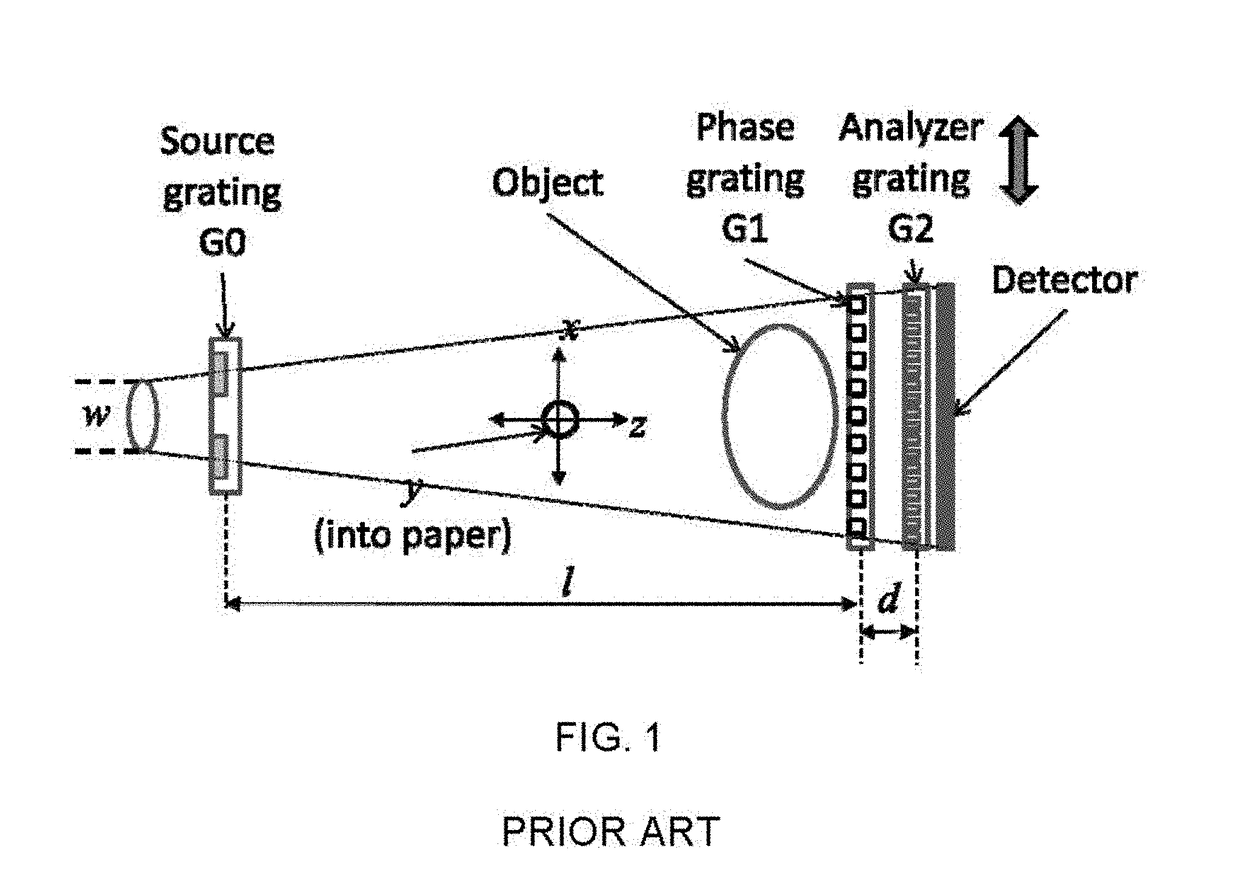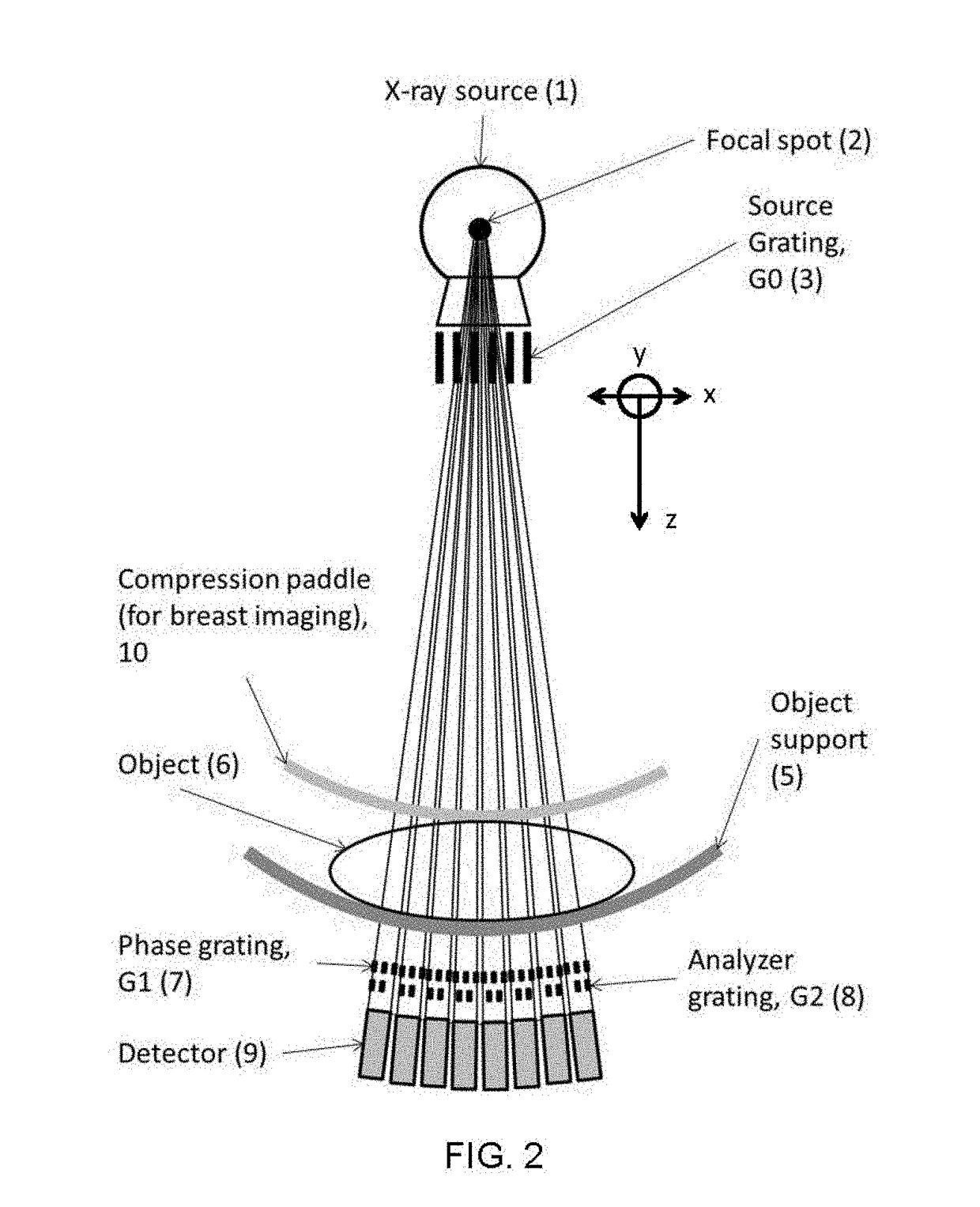Apparatus and method for x-ray phase contrast imaging
a phase contrast and x-ray technology, applied in the field of xray imaging, can solve the problems of shifting of interference pattern with current detectors, difficulty in directly imaging fine structures, etc., and achieve the effect of improving the determination of sine wave characteristics
- Summary
- Abstract
- Description
- Claims
- Application Information
AI Technical Summary
Benefits of technology
Problems solved by technology
Method used
Image
Examples
first exemplary embodiment
[0043]In this embodiment, the grating lines of all three gratings (G0, G1 and G2) are oriented orthogonal to the x-ray beam scan direction. This orientation of the gratings is illustrated in FIG. 2, and in FIG. 3A, FIG. 3B, FIG. 3C and FIG. 3D. A feature of the apparatus described in this embodiment is that the detector is sub-divided into N detector sub-assemblies. FIG. 2 shows an example having 8 detector sub-assemblies. Each detector sub-assembly having a corresponding phase grating (G1) and analyzer grating (G2). The phase grating (G1) and the analyzer grating (G2) are progressively displaced with respect to each other across the N detector sub-assemblies. The relative displacement of phase grating G1 and analyzer grating G2 is such that the over the N detector sub-assemblies measurements covering a phase shift of 2π is achieved. Alternatively stated, each detector sub-assembly provides a measure corresponding to a specific phase shift, and when measurements are performed over N...
second exemplary embodiment
[0049]In this embodiment, the grating lines of all three gratings (G0, G1 and G2) are oriented parallel to the scan direction. The analyzer grating G2 is tilted by a small angle with respect to the phase grating G1.
[0050]FIG. 7A is a schematic diagram that illustrates gratings G1 and G2 that are oriented such that the scan lines are parallel to the scan direction, and in which the gratings G2 and G1 are slightly tilted with respect to one another.
[0051]Referring to FIG. 7A, in which the tilt of G2 relative to G1 is exaggerated for illustration, pixels P(1,1) through P(1,5) each measure a different phase shift and the grating G2 is tilted such that the desired number of phase shifts covering integral multiples of 2π is achieved. As the object is scanned, assuming left to right motion in the figure, the object sampled by pixel P(1,5) that provides a measure corresponding to one phase shift is then sampled by pixel P(1,4) which provides a measure corresponding to a different phase shif...
PUM
| Property | Measurement | Unit |
|---|---|---|
| phase contrast | aaaaa | aaaaa |
| distance | aaaaa | aaaaa |
| phase | aaaaa | aaaaa |
Abstract
Description
Claims
Application Information
 Login to view more
Login to view more - R&D Engineer
- R&D Manager
- IP Professional
- Industry Leading Data Capabilities
- Powerful AI technology
- Patent DNA Extraction
Browse by: Latest US Patents, China's latest patents, Technical Efficacy Thesaurus, Application Domain, Technology Topic.
© 2024 PatSnap. All rights reserved.Legal|Privacy policy|Modern Slavery Act Transparency Statement|Sitemap



